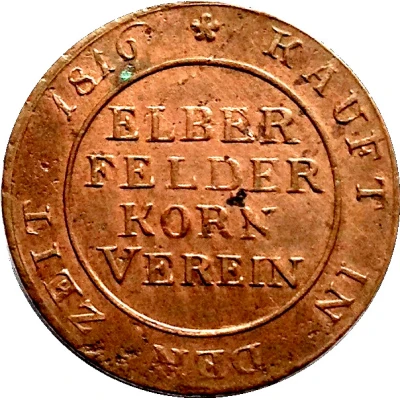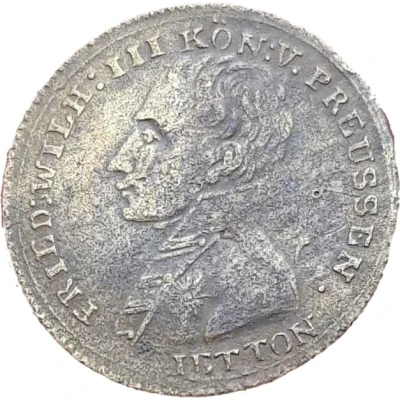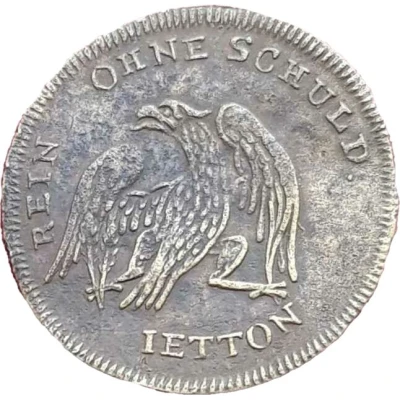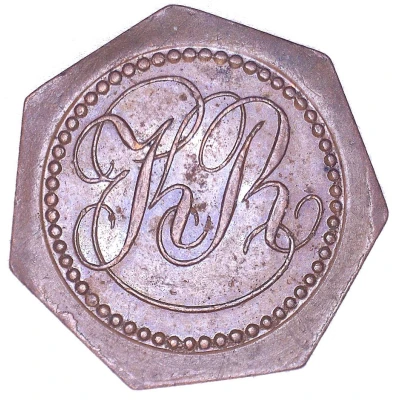


1 Brodmarke - Elberfeld Korn Verein Wuppertal
1816 year| Copper | 5.7 g | 24 mm |
| Location | Kingdom of Prussia (German States) |
|---|---|
| King | Frederick William III (Friedrich Wilhelm III) (1797-1840) |
| Type | Ration tokens › Food ration tokens |
| Year | 1816 |
| Composition | Copper |
| Weight | 5.7 g |
| Diameter | 24 mm |
| Thickness | 1.8 mm |
| Shape | Round |
| Technique | Milled |
| Orientation | Medal alignment ↑↑ |
| Demonetized | Yes |
| Updated | 2024-11-14 |
| Numista | N#120410 |
|---|---|
| Rarity index | 81% |
Reverse
Written around the edge "KAUFT IN DER ZEIT 1816" in the middle "ELBER FELDER KORN VEREIN" in four lines.
Script: Latin
Lettering:
KAUFT IN DER ZEIT 1816
ELBER
FELDER
KORN
VEREIN
Translation:
Bought in the time 1816
Elberfeld corn association
Comment
The town of Elberfeld was an important exporter of textiles in the 18th and 19th centuries. With the French Revolution, an important export market was unavailable and the unemployment and poverty in the town and surrounding area rose sharply, local farmers no longer were able to meet the food demands of the local population. As a result of these acts of war and crop failure the price for the necessary food imports increased strongly. A local Association of grain was formed in Elberfeld to fight the plight of the poorest as a means of alleviating their hunger. as due to inflation a loaf of bread cost in February 1816, 14 ½ Stüber, the daily wage of a Weaver in July was only 23 Stüber. The plight of the people was so great that in 1818 mortality increased by 35% compared to the year 1815, and the birth rate decreased by 35%.The Elberfeld grain Association was formed by Jacob Ader, a banker and Mayor of Elberfeld. Founded under his leadership in July 1816, 56 citizens drew shares (at an interest rate 5%) of 74,000 Thalers, one hundred other citizens secured the project with 50,000 Thalers against any subsequent losses.
The money was used to buy cheaper grain in the North and under market value flour which was transferred to the Elberfeld region. The price difference of this subsidized bread was about 5 Stüber, and caused some bakers to try and achieve a larger profit through adding different ingredients to the mix (sometimes with plaster!) or bake smaller loaves for sale in the surrounding areas. This necessitated the issue of copper marks, which the bakers were only allocated per copper mark an equivalent amount of flour, so stopping the fraud.
The grain Association ceased its activity in 1817 when the situation had improved. With a profit of 13,000 Thalers, Elberfeld was able to build its first hospital.



